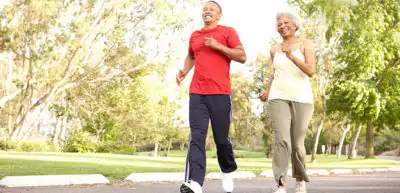
Diabetes and Exercise
Type 2 Diabetes Exercise – Does It Really Work ?
Nov 25, 2016Fix Your Lifestyle, Fix T2D
Type 2 diabetes has always been recognized as a “lifestyle” disease. This means that although you may or may not have the genes that dispose you to becoming diabetic, whether you actually become diabetic and if you do, whether you’re able to reverse diabetes (yeah, you heard right. We said “Reverse it!”). type 2 diabetes exercise is strongly linked to lifestyle choices you make, especially diet and physical activities.
When we say lifestyle, we include diet in it. So the key components, each supported by research studies that have shown measurable results on reduction of diabetes include:
- Eating right; low on carbs, moderate proteins, high on good fats
- Fasting right; giving you body the break it needs between meals
- Reducing stress levels; so your body is not craving sugars to combat stress
- Using your medicines and dietary supplements wisely to reduce insulin resistance.
- Losing weight, the healthy way
- Exercising correctly; picking and sticking to an exercise routine that suits you. This last point is exactly what the rest of this piece is about.
At sepalika.com, we go the extra mile to make sure that the information that we share is reliable; that it has research studies to back it up. Please click on “References” at the end of the article to see the research studies that have contributed to the creation of this article.
Benefits Of Exercise for Diabetics
Exercise is known to have many benefits.
- Lowers blood pressure.
- Lowers unhealthy cholesterol.
- Improves circulation.
- Supports healthy weight.
- Makes your muscles and bones stronger.
- Increases energy levels.
- Improves posture, balance and independent living.
- Helps you sleep better.
- Aids stress management.
- Improves sense of overall well being.
- Makes it easier to control your blood glucose (blood sugar) level.
Yeah, we saved the best for the last. Research has proven time and again that the biggest, direct, measurable benefit of exercise for diabetics is improved blood sugar control. The benefits of something as simple as a post-meal walk are mind boggling.
How Does Type 2 Diabetes And Exercise Work Specifically For You?
The most direct way exercise helps Type 2 diabetes is by using up sugar. Exercise needs energy. Energy is made from sugar. You exercise, your blood sugar goes down. Simple. So there is a strong connection between exercise and diabetes sugar levels.
Beyond this simple understanding, exercise has shown to improve the “insulin resistance” of cells, allowing for more sugar to enter the cells, where it belongs, rather than floating in your blood, where it does not.
Finally, stress and diabetes are often connected. When you exercise, your body produces endorphins, “feel good” chemicals that help de-stress. Lesser stress = Lesser stress hormones = Less rapid sugar poured into the blood stream to combat to handle stress.
Getting Started!
It may seem like a challenge right now, but with the right precautions, a sound fitness plan will soon set you on the road to optimum health. You can also include yoga exercise for diabetes in your physical routine.
Be Safe
Always get your doctor’s okay before you start an exercise regimen. Get assessed for any conditions that may contraindicate certain types of exercise or result in injury. Keep in mind your age and your previous physical activity level before you begin. This is especially important if: Bottom of Form
- You are older than age 35.
- Have had diabetes for more than 10 years.
- Have any complication of diabetes.
- Have not exercised in a long time, or have heart disease.
To begin with, exercise has the same effect on blood glucose as insulin. It lowers blood glucose, making you more sensitive to insulin. This is a benefit of exercise that can also pose a problem, if it lowers your blood glucose too much. If you use injected insulin or are on oral diabetic medications, then there is a greater risk of the blood glucose going too low, a condition called hypoglycemia. Don’t let this scare you. You have to start someday, so we’re going to break it down for you and let you get started with all the proper safeguards in place.
Hypoglycemia Or Low Blood sugar: How to Avoid it
What if Blood Glucose is Less Than 70mg/dL
- Test your blood glucose before and after exercise, especially when you are starting out.
- Have at least 15 grams of fast-acting carbohydrate with you to treat low blood glucose, should it happen. Some examples of what you should have handy are:
- Glucose tablets (3-4)
- Snacks – such as four ounces of juice or one small box of raisins, or four ounces of regular (not diet) soda.
Know The Symptoms of Low Blood Glucose
- Sweating
- Rapid heart rate
- Dizziness
- Headache
- Trembling
- Hunger
- Blurred Vision
- Irritability
Why Testing Your Blood Glucose Before And After Exercise Is Important
- Some people with diabetes can have “low blood glucose unawareness”. This is when your blood glucose drops below 70 mg/dL, but you don’t feel the symptoms of low blood glucose.
- Review your blood glucose readings with your doctor or diabetes educator, to understand the effect that exercise has on your blood glucose.
- Exercise has some of the same symptoms as low blood glucose (such as sweating and rapid heartbeat). It is important to begin to understand your body so you can tell the difference.
- Check all of your medications with your doctor—some medicines can hide low blood glucose symptoms (like taking a beta-blocker for high blood pressure). That means even if you are not feeling any different you could still have low blood glucose and need to take action.
Stay Well Hydrated
Any physical activity requires good hydration. Diabetics are especially prone to dehydration and getting into a dehydrated state can impact blood glucose levels and heart function adversely. Drink plenty of liquids prior to physical activity. (e.g., 17 ounces of fluid consumed two hours before physical activity). If you have any kidney issues, discuss things with your doctor before you increase water intake, to protect your kidneys. Have fluid frequently to compensate for losses in sweat.
Foot Care
Diabetics can often lose sensation to some degree in their feet either as the disease progresses or because their medication is stealing vital nutrients from their body, leading to nerve damage. Foot care requires special attention for diabetics.
- Be careful when doing physical activity involving the feet.
- To minimize injury to the feet, keep them dry by using silica gel or air midsoles as well as polyester or blend (cotton-polyester) socks.
- Wear comfortable footwear.
- Monitor closely for blisters and other potential damage to feet after exercise.
That’s it. You now know how and why exercise works to help you control your blood sugar. Now can go ahead and build the best exercise plan for yourself and get started!
References:
1. Hordern Matthew D. Dunstan David W., Prins Johannes B., Baker Michael K., Singh Maria A. Fiatarone, Coombes Jeff S. Exercise prescription for patients with type 2 diabetes and pre-diabetes: A position statement from Exercise and Sport Science Australia 2. Tripathi K.D., Essentials of Medical Pharmacology, 6th edition. 3. Ronald J. Sigal, MD, MPH; Glen P. Kenny, PhD; Normand G. Boulé, PhD; George A. Wells, PhD; Denis Prud’homme, MD, MSc; Michelle Fortier, PhD; Robert D. Reid, PhD, MBA; Heather Tulloch, MSc; Douglas Coyle, PhD; Penny Phillips, MA; Alison Jennings, MA; James Jaffey, MSc: Effects of Aerobic Training, Resistance Training, or Both on Glycemic Control in Type 2 Diabetes:A Randomized Trial 4. American Diabetes Association: Diabetes Care2004 Jan; Physical Activity/Exercise and Diabetes: http://care.diabetesjournals.org/content/27/suppl_1/s58. 5. Resistance Training and Type 2 Diabetes http://care.diabetesjournals.org/content/29/8/1933 6. Colberg Sheri R. , Sigal Ronald J. , Fernhall Bo , Regensteiner Judith G., Blissmer Bryan J., Rubin Richard R. , Lisa Chasan-Taber , Albright Ann L. , Braun Barry , Exercise and Type 2 Diabetes, The American College of Sports Medicine and the American Diabetes Association: joint position statement 7. Mohammad Asif , The prevention and control the type-2 diabetes by changing lifestyle and dietary pattern 8. Tayek John A. , Is Weight Loss a Cure for Type 2 Diabetes? 9. Gupta Alka, Awasthi H.H., Tripathi J.S. , Relevance of yoga on type 2 diabetes mellitus, Obesity and ibs – An approach through Manipura Chakra: a review discussion 10. Post Robert E. , Arch G. Mainous III, King Dana E. , Simpson Kit N. , Dietary Fiber for the Treatment of Type 2 Diabetes Mellitus: A Meta-Analysis 11. Whitebird Robin R., Mary Jo Kreitzer, Patrick J. O’Connor, Mindfulness-Based Stress Reduction and Diabetes 12. Fowler Michael J., Microvascular and Macrovascular Complications of Diabetes, 13. Clinical Diabetes 2008 Apr; 26(2): 77-82. 14. IbañezJavier , Izquierdo Mikel , ArgüellesIñaki , ForgaLuis , LarriónJosé L. , Marisol García-Unciti, IdoateFernando , Gorostiaga Esteban M. , Twice-Weekly Progressive Resistance Training Decreases Abdominal Fat and Improves Insulin Sensitivity in Older Men With Type 2 Diabetes 15.Wojtaszewski Jørgen F.P., Richter Erik A., Effects of acute exercise and training on insulin action and sensitivity: focus on molecular mechanisms in muscle, Copenhagen Muscle Research Centre, Institute of Exercise and Sport Sciences, University of Copenhagen, Denmark





